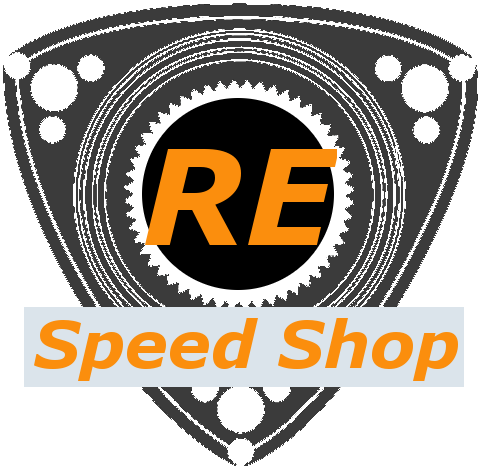 Cleaning and Prepping the rotors | The most important action when rebuilding the rotary engine. Results matter.
Cleaning and Prepping the rotors | The most important action when rebuilding the rotary engine. Results matter.
These Doritos do a lot of work. The time to get them inspected, cleaned and prepped is critical for long life after the rebuild.
Every groove has a specific job to do, leave carbon deposits in there or forget to measure for exact tolerances will reduce the life and performance of your rotary engine.
The next often overlooked function is the coating on the rotors from the factory, do not remove it by using a stainless steel wire brush. That coating is there for a reason.
Those two very important functions is why we have a proper ultrasonic cleaner. The right temperature and alkaline solution equals parts that are clean and right for the rebuild. I've used the cheap (lower wattage) units with simple green, they do a decent job for nuts & bolts. They are useless for all of the other components that require effective cleaning.
Every component needs to be cleaned at the right temperature for the correct amount of time. Ultrasonic cleaning uses cavitation bubbles induced by high-frequency pressure (sound) waves to agitate a liquid. The agitation produces high forces on contaminants adhering to substrates like metals, plastics, glass, rubber, and ceramics. This action also penetrates blind holes, cracks, and recesses where a traditional cleaning process will miss. Just because you cannot see it, that doesn't mean it is clean. No other process is as effective and safe for rebuilds.
We clean the following on all of our rotary engine rebuilds with the ultrasonic cleaner:
- Rotors
- Rotor housings
- Side housings
- Eccentric shaft
- Through bolts
- Oil pan
- Intake manifold (both plastic and aluminum)
- Main wiring harness, this allows us to have a clean harness for inspection and repair if necessary, remember these motors / cars are getting up there in age, wiring harnesses become brittle, repair with caution.
- Fuel injectors
- All oil lines & coolers
- Radiator (plastic and aluminum) unless we replace with larger unit.
- Lower pan
- All shrouds and plastic components in the engine bay
- All bolts, nuts, fasteners
This list is not fully complete as we want all components clean an inspected. The key here is that our builds go back to the owner with 'like new' appearance and performance.
 We have a well defined chart for temperature and time needed to clean and not damage components. Try that with an old school parts washer. Also, because we have one of the best machines in the industry, their customer service is world class.
We have a well defined chart for temperature and time needed to clean and not damage components. Try that with an old school parts washer. Also, because we have one of the best machines in the industry, their customer service is world class.
From low temperature (for wiring harnesses) to full hot for cast iron components, do it right, get it clean and get it right. Details matter.
Another shop asked me about corrosive actions and how to avoid them when cleaning. The Ultrasonic cleaner uses an alkaline solution, with the right time (especially for aluminum) we have not found it to cause this. I'm sure if we stepped outside the proven heat / time it would start to pit.
Getting parts clean is more than some degreaser and a brush, inside components (where the real engine work operates) need proper clean. Get it right with ultrasonic cleaning. The right tools, process, results.
Topics: Rotary Engine REbuild, Ultrasonic Clean


